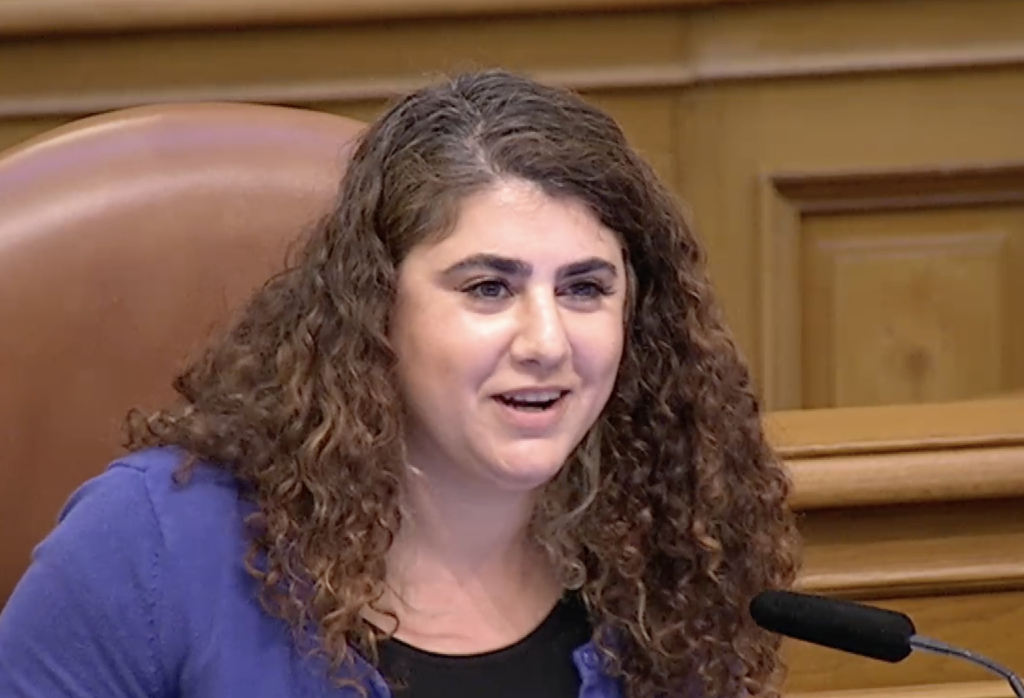The Small Business Commission declined July 28 to support Mayor Daniel Lurie’s West Side upzoning plan, in yet another sign that communities fear the impacts on neighborhood commercial areas.
The commission voted unanimously to continue the discussion to a future meeting after most members said the plan lacked adequate protections for small merchants who could be in the path of demolitions.
The Lurie plan allows more height and density in transit corridors in the Richmond, the Sunset, West Portal, the Haight, and other neighborhoods that are considered “well resourced.”

The plan, Principal Planner Lisa Chen told the commission, is aimed at encouraging the creation of more housing—and fulfills a state mandate that the city allow for roughly 80,000 new housing units in the next six years.
“We need to do this by state law,” Chen said.
The problem, which the Planning Department has laid out in public documents, is that some of the site where new, denser housing could be built are currently occupied by small neighborhood serving businesses, which would be displaced when the building is demolished for denser, taller construction.
The new, mostly high-end, housing would have space on the ground floor for retail—but everyone acknowledges that the city has little leverage to ensure that the new spaces are be affordable at the rates local businesses now pay.
“In some pro-formas, they don’t even list income from those spaces,” Chen said.
Help us save local journalism!
Every tax-deductible donation helps us grow to cover the issues that mean the most to our community. Become a 48 Hills Hero and support the only daily progressive news source in the Bay Area.
One speaker noted the problem: The loans the developers take out require certain rent levels—and making retail or restaurant space available at lower rents could be a violation of the loan covenants.
So potentially hundreds of businesses along, say, Geary Boulevard, Clement St., or Haight St. could lose their spaces—and will never be able to move back in.
That could have huge impacts on existing commercial centers—and the local economy. According to the Planning Department, small businesses employ 360,000 people in the city—far more than, say, the tech industry.
Chen said that city is looking to create a loan fund, to help displaced businesses find new spaces. But a lot of neighborhood serving businesses are linked directly to their current location, where their customers are, and might not fare well if they have to move to another neighborhood.
“I fear that our ways to mitigate displacement sound better than they will play out,” Commissioner Miriam Zouzounis, whose family runs a deli and corner store in SoMa, said. “Loans and grants are not a way to mitigate” small business displacement.
“I don’t trust landlords or the city,” Zouzounis said. “They have a bias” [toward developers].
The commissioner said that the city has a lot of great programs and services, but that “I don’t think the Office of Small Business can handle the fallout from something like this.”
And in exchange for threatening hundreds of small businesses, the city won’t even get close to its goal of creating some 46,000 units of below-market-rate housing.
This plan, housing activist Calvin Welch noted, actually calls for upzoning rules that would allow 36,200 new housing units. But the fine print on the city’s own presentation shows that 20,000 of those should be affordable to low-income people, and 8,000 to moderate-income people.
That means 80 percent of the new units should be below market rate. “And what is the requierement for affordable housing?” Welch asked. “It’s 15 percent.
“This isn’t an affordable housing program. This is a real-estate development plan, a plan for speculators. … Haight Street will see the displacement of roughly 50 percent of neighborhood businesses. There is nothing in this plan to preserve neighborhood serving retail.
“If you want it in this plan, this commission must come up with the language. … You should amend the plan to require preservation of neighborhood businesses and neighborhood shopping districts.”
Gwen McLaughlin, representing Small Business Forward, urged the commission to delay any approval until “vital small business protections are included.”
Christin Evans, who owns a bookstore on Haight Street, said that it would be “a really big mistake” to approve this without better protections.
In neighborhoods where new high-end housing has been built, she said, there are lots of commercial vacancies. The building at 8 Octavia has three storefronts—all vacant, she said.
“The real estate folks that I’ve talked to say ‘we actually go in with a plan to develop a building, and we put in certain rent expectations for what we can achieve.’ And they will not rent for less than what they put in those loan covenants, or they will risk the bank taking their property away for violating the loan covenants.”
At 855 Brannan, which has been available for rent since 2004, there are ten storefront vacancies, including some that have been vacant for 20 years. “It’s an afterthought,” Evans said. “They are making money from the condos.”
Zouzounis moved to continue the discussion until the next meeting, in the hope that the city would come forward with more proposal to protect small businesses. That passed 6-0.
The Small Business Commission can’t block the upzoning plan; the Board of Supes has final authority over local zoning. But the message the vote sends (and the message that would go to the supes if the commission in the end votes against the plan) is hard to ignore.
The problem is that state law gives the city very few options to protect local businesses. San Francisco can’t impose commercial rent control, can’t require landlords to rent at the same price that the previous owner charged before demolition, and can’t mandate that existing small business tenants have a right to return.
Those rules, or course, could change, if the likes of Sen. Scott Wiener, who has imposed these upzoning mandates, would work to get cities the ability to mitigate the impacts.



